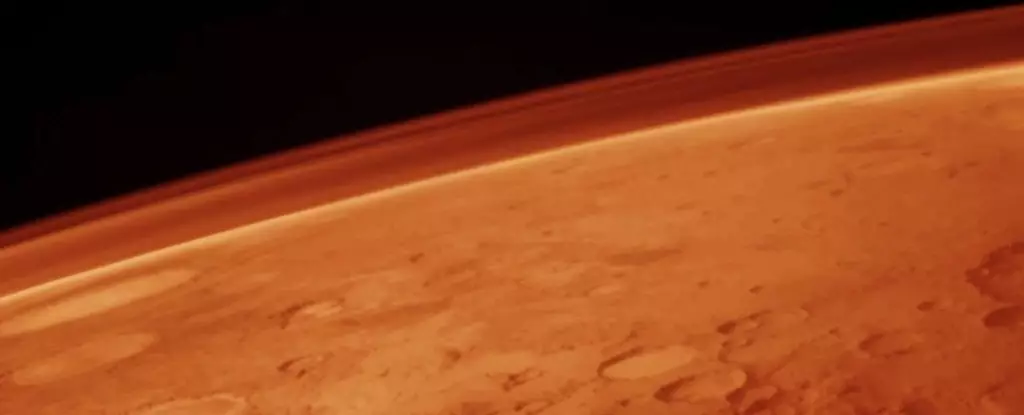For generations, the concept of terraforming Mars has tantalized scientists, futurists, and dreamers alike. The idea of transforming the Red Planet into an Earth-like environment filled with lush landscapes and thriving ecosystems seems tantalizingly close yet frustratingly out of reach. While literary depictions, such as those in Kim Stanley Robinson’s Mars Trilogy, paint a hopeful picture of colonization, the harsh realities of planetary physics ground these fantasies in sobering calculations. The recent work by Dr. Leszek Czechowski from the Polish Academy of Sciences serves as a pertinent reminder that, while inspiring, our aspirations must contend with overwhelming scientific challenges.
In the abstract presented at the 56th Lunar and Planetary Science Conference, Dr. Czechowski examines not just the feasibility of terraforming Mars, but the immense energy requirements that accompany such monumental endeavors. The very foundation of making Mars hospitable hinges on manipulating its atmospheric pressure to a level that can support human life. This critical aspect reveals the stark truth: achieving even marginal improvements in Martian conditions involves a staggering volume of work and resource allocation.
The Pressure Dilemma
The current atmospheric pressure on Mars is a mere fraction—about 1/100th—of what we experience on Earth. This discrepancy presents an immediate danger, as water within human bodies would boil under these conditions. It’s a sobering thought that anyone hoping to set foot on Mars would require a pressure suit to survive, making the transition from mere exploration to permanent habitation a daunting challenge. Dr. Czechowski highlights that certain Martian locations, like Hellas Planitia, come marginally closer to our requirements, but even here we are left grappling with numbers that seem impossible to overcome.
If we are to raise Mars’s atmospheric pressure to a livable standard, the sheer volume of gases required is astronomical. In this light, Czechowski’s model opens a Pandora’s box of questions about sourcing the necessary materials. Can we realistically obtain enough atmospheric gases from celestial bodies, or are we confined to the realms of science fiction?
Grasping at Celestial Resources
Dr. Czechowski’s investigative compass points toward asteroids from the Kuiper Belt as potential solutions for this resource dilemma. The reasoning makes sense: by targeting bodies from the Kuiper Belt, we could theoretically access adequate materials to facilitate changes in Mars’s atmosphere. However, the asteroid belt’s relative proximity becomes less of an advantage when we consider its limitations. While it boasts a wealth of water, the nitrogen amounts are grossly insufficient for sustaining a life-sustaining atmosphere.
Even grander prospects lead us to the Oort Cloud, which brims with icy bodies that could shatter our atmospheric woes with their abundant resources. Still, we face an intimidating timeline; Czechowski notes it could take an astonishing 15,000 years to maneuver such objects close enough to Mars—an extreme delay that fundamentally tests our patience and ambitions.
Rather than merely suggest a hopeful remedy, Czechowski emphasizes the practicalities that would need addressing for terraforming efforts to succeed. His revelations invite us to question not only the logistical capabilities but also the ethical implications of manipulating celestial bodies at such an enormous scale.
The Energy Factor
One of the most significant hurdles illuminated in Czechowski’s work is the energy burden associated with terraforming. Transporting asteroids and redirecting them toward Mars isn’t merely a matter of sending a spaceship to collect them. Instead, this task demands revolutionary propulsion technologies capable of handling immense weights over vast distances. For this, Czechowski proposes using a fusion reactor to power an ion engine, suggesting that the future of space propulsion may rely on harnessing nuclear phenomena to fulfill our ambitions.
Energy consumption is at the crux of terraforming debates, with every proposed solution spiraling into complexities of supply and demand. As we ponder the feasibility of such an undertaking, questions arise about the broader implications for our current energy systems. Would our quest for Martian colonization divert vital resources from resolving pressing issues here on Earth?
Forks in the Road
Ultimately, the future of Mars remains a topic of heated speculation marked by grand aspirations and bitter truths. While terraformers dream of coated skies and verdant fields, we must wrestle with scientific principles that often feel like insurmountable walls. The allure of Mars, coupled with the intoxicating vision of habitable red landscapes, compels us to confront these realities head-on.
Dr. Czechowski’s critical analysis not only sheds light on the immense energy demands and complexities of space engineering but also invites a larger philosophical discourse. As we reach toward the stars with one hand, the other must remain firmly grounded in earthly pragmatism. Terraforming may remain a distant objective, but the fire of inspiration it ignites is undeniably powerful, urging humanity to question what lies beyond familiar horizons.

